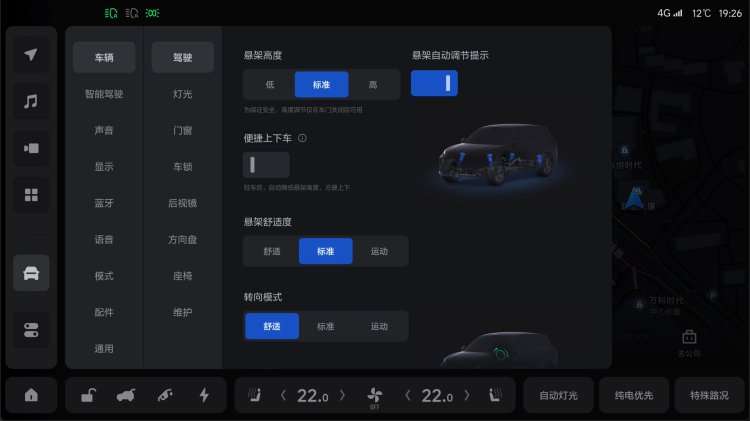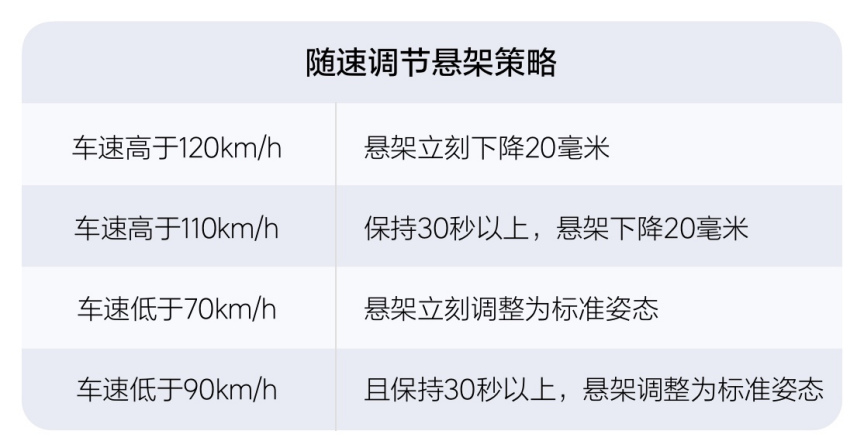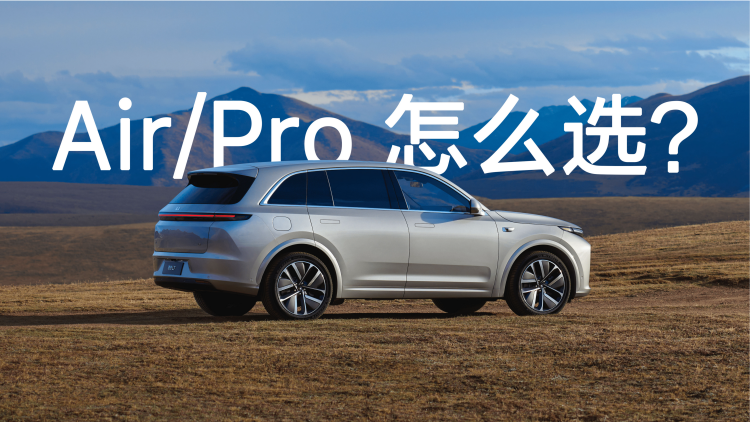Ideal L7 and Ideal L8’s Air Version are Here!
The Air Version differs from the Pro version by 20,000 RMB primarily in the suspension system utilized. The Pro version has the Ideal Magi-carpet Air Suspension, while the Air version uses the CDC Continuously Variable Damping Suspension System. What makes the difference between these two systems? And how does that extra 20,000 RMB affect the driving experience? Based on my personal experience with the Ideal Magi-carpet Air Suspension, let’s take a closer look.
Hardware Composition of Ideal Magi-carpet Air Suspension

To start, let us first understand the main hardware components of the Ideal Magi-carpet Air Suspension. Firstly, it includes a front double-arm and rear five-link chassis structure, along with the intelligent air suspension (air spring) and the CDC continuously variable damping shock absorber.
The difference between the Air and Pro versions is primarily in the use of a helical spring instead of an air spring, while still retaining the CDC shock absorber. As a critical component of Ideal Magi-carpet Air Suspension, the air spring’s primary value is in helping to adjust the vehicle’s chassis height, thereby creating many valuable scenarios for use. Let us explore some of them.
Low Mode – A Better Handling Experience

In the vehicle settings menu of the onboard computer, the suspension height can be adjusted to three different modes: High, Standard, and Low. When Low Mode is selected, the chassis is lowered by 20mm, providing significant improvements in handling stability. If we then adjust the suspension to “Sport” mode, we can increase our driving confidence and have a better driving experience whether in the city or on mountain roads, all while ensuring we’re driving safely. By the way, this is the mode I use on a daily basis.
High Mode – Improved Off-Road Capabilities
When the suspension height is adjusted to High mode or Off-Road Rescue is activated, the chassis will rise by 40mm, providing a ground clearance of up to 216mm. Even if we want to adventure farther and see the most awe-inspiring natural beauty, we won’t have to worry about encountering rough terrain. Whether we’re climbing mountains or fording water, the 40mm increase in height will play a crucial role.### More Convenient Boarding and Exiting Experience
Also in the vehicle settings menu of the car’s infotainment system, there is a function called “convenient boarding and exiting”. When turned on, it automatically lowers the chassis by 40mm after the vehicle is parked in gear P, making it easier for passengers inside the car to get off. When boarding, the chassis automatically rises back to its normal state when the vehicle speed exceeds 5 km/h.
In fact, taller car owners may not use this function very often, but during this year’s Spring Festival, when I was picking up elderly relatives and going out, I kept this function turned on. Seeing how elderly people with limited mobility can get on and off the car relatively easily, I think this feature is worth it.
Loading Mode, Making It Easier to Put Things in the Trunk

On the left rear side of the trunk, there is a loading mode button. Pressing it will lower the vehicle’s rear suspension by 50mm, making it easier to load and unload heavy objects.
Automatic Body Leveling, Bid Farewell to Sagging Butt
If you have driven on the highway during the Spring Festival travel rush, you often see cars packed with people and luggage, with sagging rear ends. As someone who demands proper vehicle posture (like hairstyle), I try to make it as coordinated as possible. Air suspension solves this problem perfectly. Here is an ideal L8 video to show you how it works.
Since all four suspensions have height sensors, they can monitor changes in the vehicle’s height in real-time and implement automatic leveling. The Air version does not have automatic leveling, and the headlight height adjustment is changed from adaptive to manual. Just a reminder, if you have the Pro version and hear the sound of air escaping after getting off, that is normal and indicates that it is automatically leveling.### On-the-Fly Adjustment for Low Wind Resistance and Low Energy Consumption
One of the features that makes me enjoy daily use of the air suspension system is the On-the-Fly adjustment. When the speed exceeds 120 km/h, the chassis immediately lowers by 20 mm to provide lower wind resistance and better energy consumption for the vehicle.

If the speed is below 70 km/h, the chassis will return to standard state automatically. The automatic adjustment of the air suspension in various scenarios is an ideally self-developed algorithm.
Natural Comfort of Air Suspension

The Air version of the product uses spiral springs, which have some differences in physical properties compared to the Pro version’s air suspension. The spring body of the air suspension is made of rubber, which varies in stiffness curve under different road conditions. On the other hand, the stiffness curve of the spiral spring is consistent on flat or bumpy surfaces.
For example, while driving on a flat road with less suspension travel, the stiffness of the air spring is lower than that of the spiral spring, making it softer and more comfortable to ride. Meanwhile, due to the air in the air spring and its low friction, it also provides better noise isolation.
So what about the Air version with spiral springs? In fact, the performance is also good when compared laterally, as the Air version features continuously adjustable CDC damping shock absorbers, with CDC playing a decisive role in the comfort. The main value of the air spring lies in its more versatile usage scenarios, and its contribution to comfort is auxiliary. From the overall performance of the chassis in various car models in the current market, air spring + CDC > spiral spring + CDC > spiral spring + hydraulic shock absorber. The spring calibration target of the Air version is to achieve a performance that is close to the air suspension, and it is the only model equipped with CDC in the 300,000-350,000 RMB price range.
Extended Warranty for a Worry-Free Usage
In the past year, NIO has delivered the most vehicles globally with air suspension system. Many car enthusiasts, before NIO, have only seen air suspension system in million-dollar luxury cars (it is still a source of envy when my friends ride in my L9 with air suspension). In order to provide everyone with a better experience, NIO provides 8-year or 160,000 km warranty for air suspension system, which is higher than the industry standard. If you choose the Pro version, you can rest assured in terms of warranty.### Selection advice
Finally, let’s talk about the selection advice. The Pro version is 20,000 yuan more expensive than the Air version. The main difference is that it has hardware with air suspension, which brings the above-mentioned functional value. Overall, I believe it is worth the money. It may even be more than worth it for car enthusiasts who value the ideal magical carpet air suspension, as it costs 28,000 yuan for selected options in other brands.
Choosing the Air version is also fine, as its product power is definitely beyond the value preference of the same level. Spiral springs + CDC also provide an exceptional experience, so how to choose depends entirely on your driving scenario and car purchase budget.
That’s all about the purchase analysis of the Air and Pro versions. If you have any questions, you can communicate in the comment area.
This article is a translation by ChatGPT of a Chinese report from 42HOW. If you have any questions about it, please email bd@42how.com.
